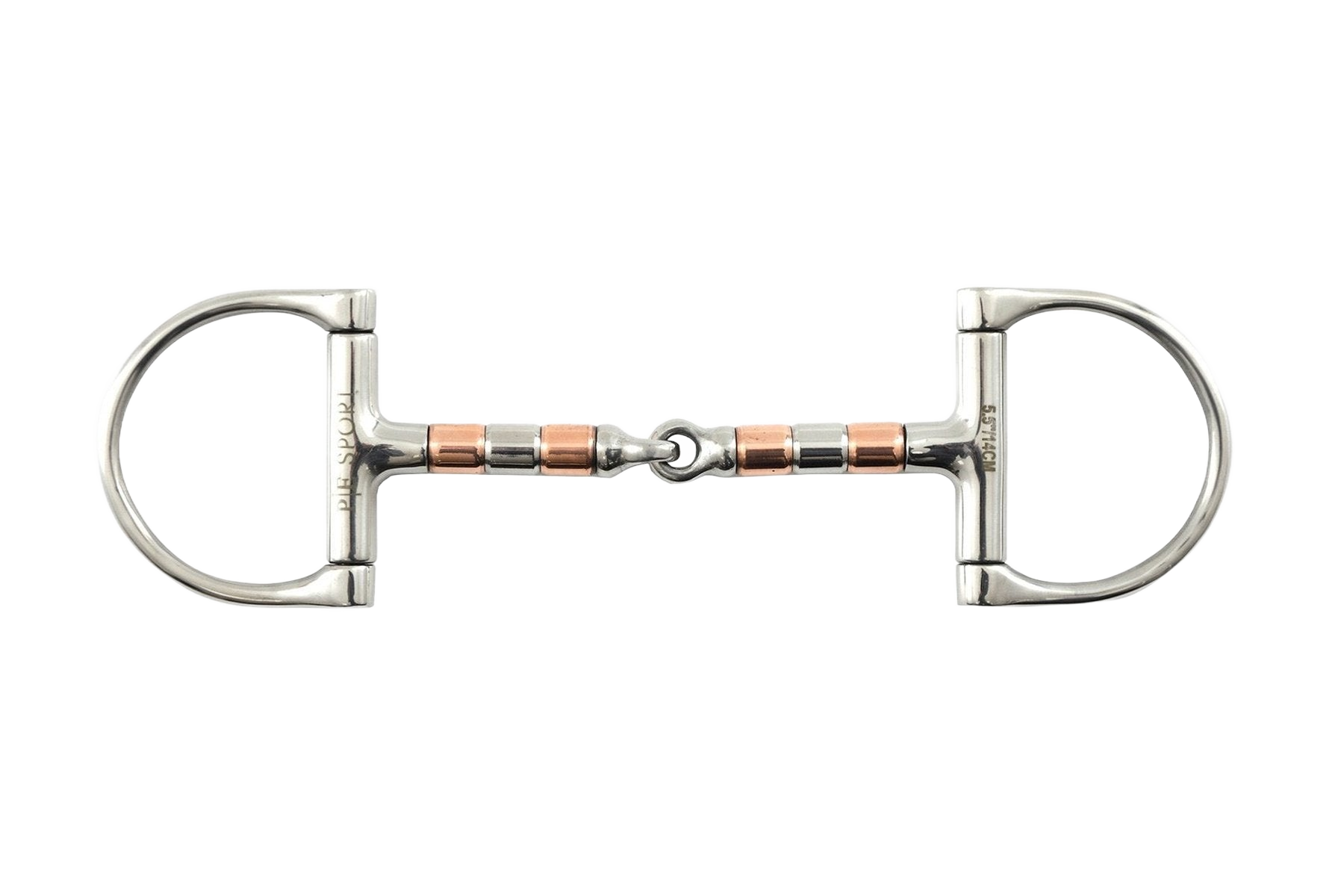Premier Equine Copper Roller Mouth Dee Bit
- Regular price
-
$63.99 - Regular price
-
$72.00 - Sale price
-
$63.99
Estimated Shipping Widget will be displayed here!
Couldn't load pickup availability
rollThe copper roller mouth dee bit is useful for horses that tend to fix or try and grab/lean on the bit. The alternating copper and stainless steel rollers set along the mouthpiece enable the bit to move in the horse's mouth preventing them from grabbing or leaning on the bit. The single jointed mouthpiece has a nutcracker action applying pressure on the lips and bars of the mouth. The dee ring cheeks can aid with steering, backing up the aids when the rider asks for a turn.
Copper rollers warm and react with the salvia to encourage mouthing and acceptance of the bit. Made from stainless steel, which is the most common material used for horse bits, it is durable, easy to clean, tasteless and does not rust.
Measurements
As per our size guide the A & B measurements of this bit are as follows:
A=14mm
B=65mm
Stainless Steel Horse Bits...
Stainless steel is the most commonly used material for horse bits as it is durable, easy to clean and does not rust. Some of our stainless steel bits feature copper mouthpieces which help to create a warming sensation and encourage the horse to salivate and accept the bit. Stainless steel bits are suitable for a wide range of horses and are available in many designs so that you can choose the right bit for your horse and discipline.
Shipping Info
Shipping & Pickup Information
Flat Rate Shipping via Post Haste (Excludes Feed):
- North Island: $10 (1-2 working days)
- South Island: $20 (2-3 working days)
- Rural Surcharge: +$6 (extra time may apply)
Feed Shipping per bag via Post Haste:
- Central North Island: $14 Per Bag
- Upper North Island: $18 Per Bag
- Lower North Island: $28 Per Bag
- South Island: $55 Per Bag
- Rural Surcharge: +$6 (extra time may apply)
Orders placed before 1 PM are usually shipped the same day.
Click & Collect:
- Free 24/7 pickup via our after-hours collection box.
- Instructions will be emailed when your order is ready.
Returns & Exchanges
No problem! We offer 30-day returns and exchanges on all items in new, resalable condition with the original packaging. See our full policy.
FAQ
All your questions, answered.


The thermoneutral zone is the temperature range where the body can maintain its core temperature with little to no extra energy expenditure. For humans, this range is quite narrow at 21–28 °C, but for horses it’s much broader at 5–25 °C.
This difference means we should avoid rugging horses based on how cold we feel. Over-rugging can lead to serious health issues, including metabolic problems and thermoregulatory dysfunction.
Tips for Choosing a Winter Rug Weight
-
Clipped horses may need a heavier gram fill to stay comfortable.
-
Remember: horses warm themselves more easily than they cool down under a rug. If unsure, choose a lighter rug.
-
Check your horse regularly to make sure they are neither too hot nor too cold.
-
Consider your horse’s age and natural ability to stay warm.
-
As a general guide, rugging is usually appropriate when temperatures drop below 5–10 °C, but always adjust for your horse’s individual needs.
-
Always ensure rugs are waterproof. A wet rug is worse than no rug at all.
This is an indicative guide only. Always take into account factors such as wind chill, your horse’s age, weight, and condition.



